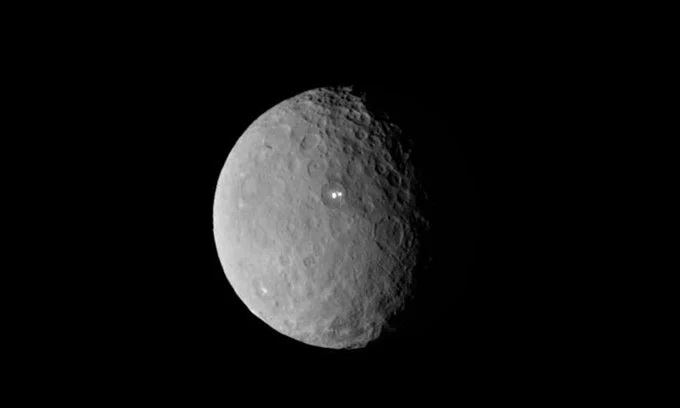Analysis of the composition of the meteorite falling in Sudan showed that it could detach from an ancient asteroid 640 to 1,800 km in diameter.
Scientists have found evidence that the solar system may have existed in the past with an asteroid as large as Ceres. With a diameter of around 950 km, Ceres is the largest celestial body in the solar system’s asteroid belt and classified as a dwarf planet. The new study was published in the journal Nature Astronomy on December 21.
In the new study, Dr Vicky Hamilton of the Southwest Research Institute and her colleagues analyzed a small fraction of the Almahata Sitta meteorite. Almahata Sitta is one of 600 debris from an asteroid weighing 9 tonnes and 4 meters wide that entered Earth’s atmosphere in 2008. This event marks the first time that scientists have been able to predict an asteroid crash on Earth. . About 10 kg of material from this asteroid was collected in Sudan.
Hamilton’s team found amphiboles in the Almahata Sitta meteorite fragment. This mineral can only be formed at a certain heat and pressure in the presence of water for a long time. This is the first time that such a mineral has been discovered in a meteorite fragment.
Conditions like the one above cannot exist in the small celestial bodies of the solar system. The presence of amphibole showed that Almahata Sitta was to form on a very large celestial body which has now been destroyed. Scientists estimate that this object has a diameter of 640 to 1,800 km.
The Almahata Sitta meteorite fragment analyzed by the team is of the carbonaceous chondrite (CC) type. “Carbonaceous chondrite meteorites record the geological activity of the early stages of the solar system and provide information about the mother’s celestial past,” Hamilton said.
The makeup of Almahata Sitta is quite unique, but may not be unique. Asteroids Ryugu and Bennu also possess characteristics that indicate long-term exposure to water. The Hayabusa2 (Japan) and OSIRIS-Rex (NASA) spacecraft have collected samples from these two asteroids. The researchers are eagerly awaiting the results of their analysis.
“If the composition of the specimen that Hayabusa2 and OSIRIS-REx report is different from what we get in the meteorite fragments, then it is possible that the physical properties are preventing them from breaking, from flying through the air. However, we believe that carbonaceous chondrite in the solar system is more common than the amount reflected in the asteroid collection on Earth, ”Hamilton said.


